Design-Led Engineering
What function does design-led engineering serve in modern software organizations, and what are the benefits and challenges of adopting it? Find out.
One minute insights:
 Leaders’ teams adopted design-led engineering to deliver better user experience (UX), increase product agility or align with digital transformation efforts
Leaders’ teams adopted design-led engineering to deliver better user experience (UX), increase product agility or align with digital transformation efforts Respondents believe their developers feel positively about design-led engineering
Respondents believe their developers feel positively about design-led engineering Better UX, increased agility and more collaboration between engineering and design are common benefits
Better UX, increased agility and more collaboration between engineering and design are common benefits Hard-to-define ROI, implementing design-led principles and recruitment are significant challenges
Hard-to-define ROI, implementing design-led principles and recruitment are significant challenges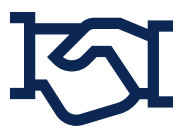 Leaders saw changes in their cross-functional collaboration practices as a result of design-led engineering
Leaders saw changes in their cross-functional collaboration practices as a result of design-led engineering
Engineering leaders’ teams adopted design-led engineering to deliver better UX
Almost three-quarters (74%) of respondents’ teams adopted design-led engineering to deliver a better UX. Nearly half did so to increase product agility (48%) or align with digital transformation efforts (47%).
Why did your team decide to adopt design-led engineering? Select all that apply.
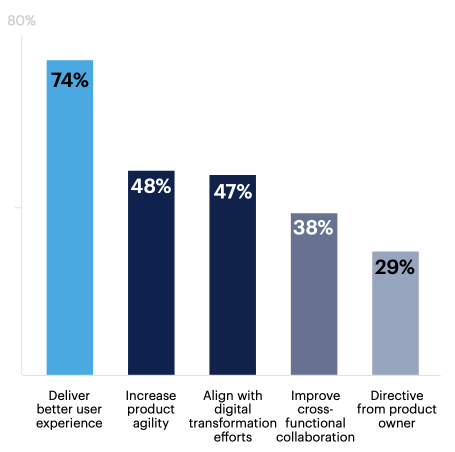
Address market pressure (e.g., respond quickly to competitors) 26% | Request from employees 23% | Executive pressure 15% | None of these 0% | Other 0%
n = 102
Question: According to your staff, what is the primary benefit of design-led engineering?
[Design-led engineering] allows us to better connect the work that we’re doing to the customer experience while also ensuring that we can build out the vision (or adjust if necessary)
It can reduce the risk of costly design flaws or usability issues and streamline the development process by aligning the engineering efforts with the overall design vision.
Leaders believe their developers feel positively about design-led engineering
More than three-quarters (76%) of respondents said their developers feel mostly or somewhat positive about design-led engineering.
How do your developers and engineers feel about design-led engineering?
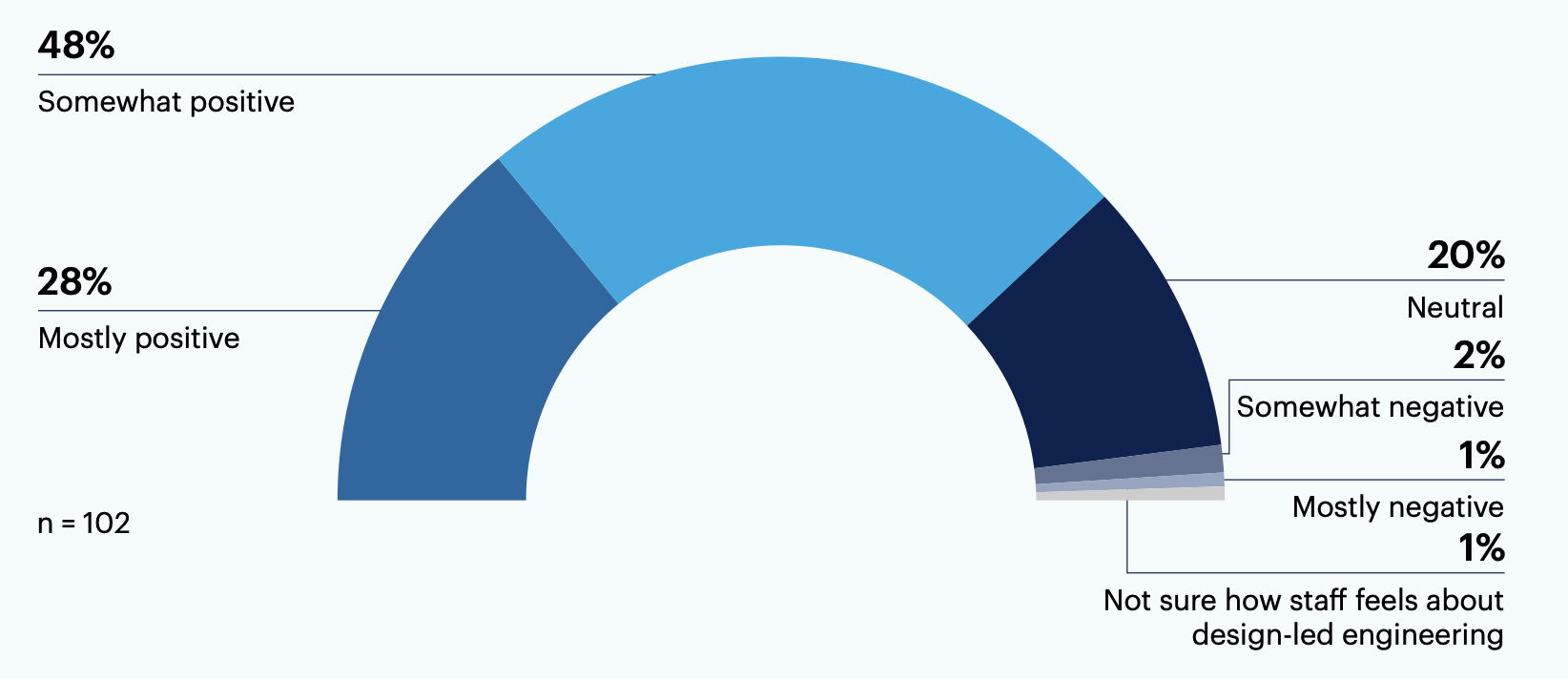
Most respondents are satisfied with the prototyping (81%) and ideation (79%) phases of design-led engineering, but some note dissatisfaction with defining user needs (12%) and testing (11%) phases.
How satisfied are you with the following phases of design-led engineering in your organization?
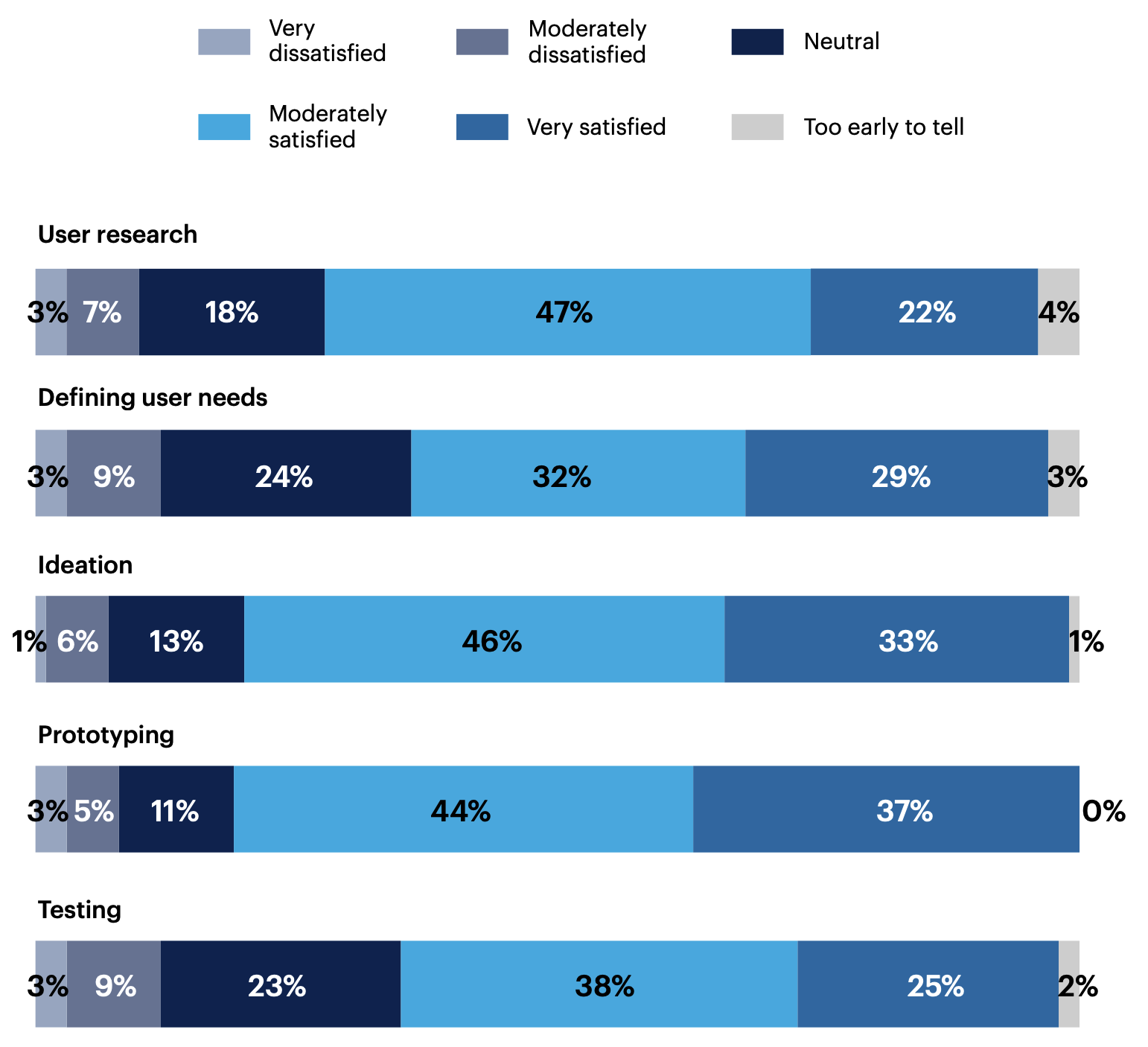
n = 102
Note: May not add up to 100% due to rounding
Question: According to your staff, what is the primary drawback of design-led engineering?
Engineers are happy that real-world users’ feedback is part of the initial product design and implementation.
Time and efforts go to waste if the product fails the testing phase.
Better UX is a common benefit of design-led engineering, while hard-to-define ROI is a significant challenge
A common benefit of design-led engineering that respondents have seen in their organizations is better UX (65%). Half (50%) have noticed increased agility and 48% have experienced more collaboration between their engineering and design teams.
What benefits of design-led engineering have you seen in your organization? Select up to 3.
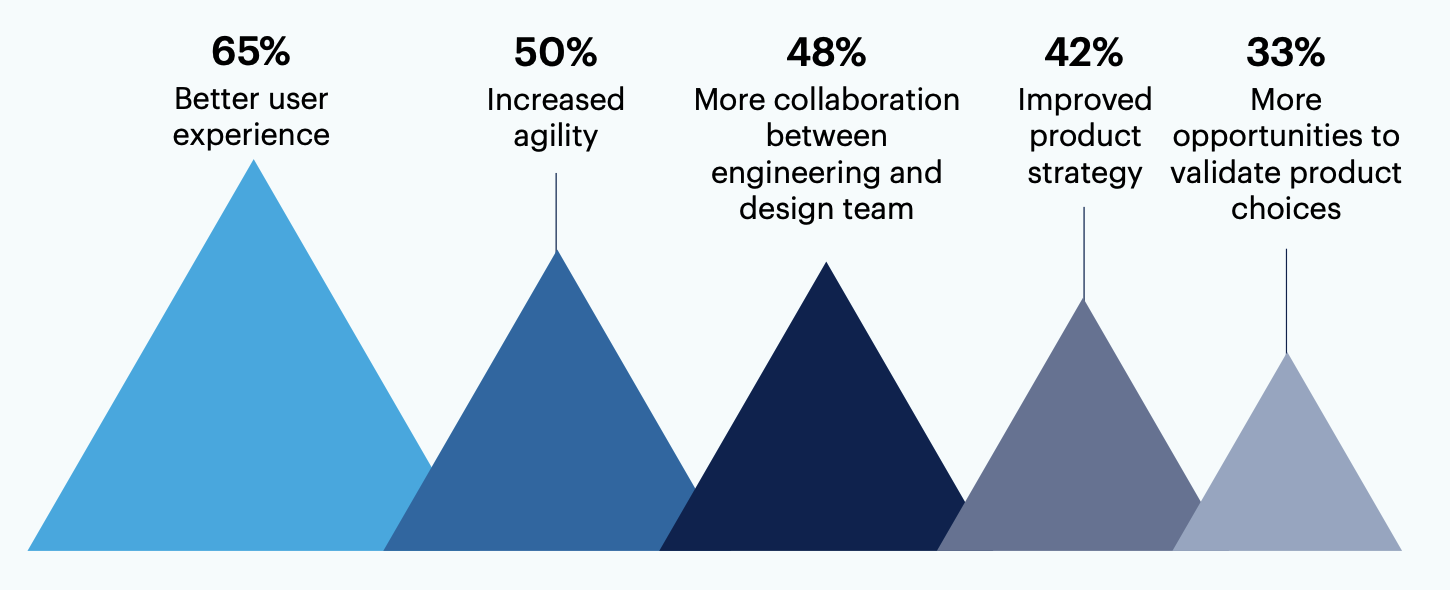
n = 102
More efficient problem solving 26% | Scalability 23% | Measurable product success (e.g., higher sales, lower churn) 21% | Too early to tell 12% | None of these 1% | Other* 1%
*Other includes: “Better alignment to customer expectations”
What were the most significant challenges you experienced with design-led engineering in your organization? Select up to 3.

Hard-to-define ROI (43%) is a significant challenge with design-led engineering for respondent organizations. 41% have experienced problems with implementing design-led principles or recruiting staff with relevant experience.
Costs (e.g., hiring, training, purchasing new tools) 29% | Difficulty communicating with users 25% | Lack of executive buy-in 19% | Difficulty collaborating with other departments 17% | Too early to tell 8% | None of these 2% | Other* 1%
*Other includes: “Design without engineering input”
Question: According to your staff, what is the primary benefit of design-led engineering?
According to our staff, [design-led engineering] places a strong emphasis on creating solutions that are not only functional, but also user-friendly and aesthetically pleasing.
Question: According to your staff, what is the primary drawback of design-led engineering?
[Design-led engineering] adds additional time cost and product development gets impacted. Difficulty in getting user's effective time and attention for involvement is also one of the important factors. It is not a drawback as such, but some of the difficulties in getting design-led engineering keep going.
Leaders experienced changes in their cross-functional collaboration as a result of design-led engineering
61% of respondents say that their team’s cross-functional collaboration practices have changed as a result of design-led engineering. Respondents also noticed shifts in project timelines (58%) and project deliverables and milestones (40%).
What has changed about the way your team works as a result of design-led engineering? Select all that apply.
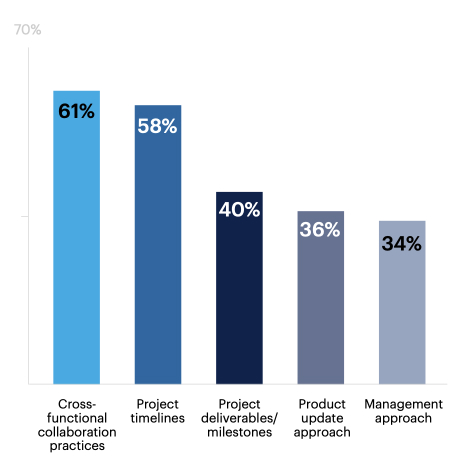
Tool stack 27% | Employee training 25% | User metrics gathering and reporting processes 24% | Hiring/recruitment strategy 21% | None of these 6% | Other 0%
n = 102
Question: What tip would you offer engineering leaders for successfully scaling a design-led approach throughout an organization?
The future of technology is focused completely around user experience. The company needs to buy that idea in order to ensure all efforts are aligned; if one unit is misaligned, it could result in burnouts.
It is very important for the design and development teams to be in sync. Make sure every minute detail is captured in the designs and nothing is left on assumptions. Keep a phase in the development lifecycle for the design team to review whether development is according to the designs.
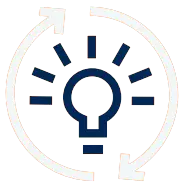
Want more insights like this from leaders like yourself?
Click here to explore the revamped, retooled and reimagined Gartner Peer Community. You'll get access to synthesized insights and engaging discussions from a community of your peers.
Respondent Breakdown
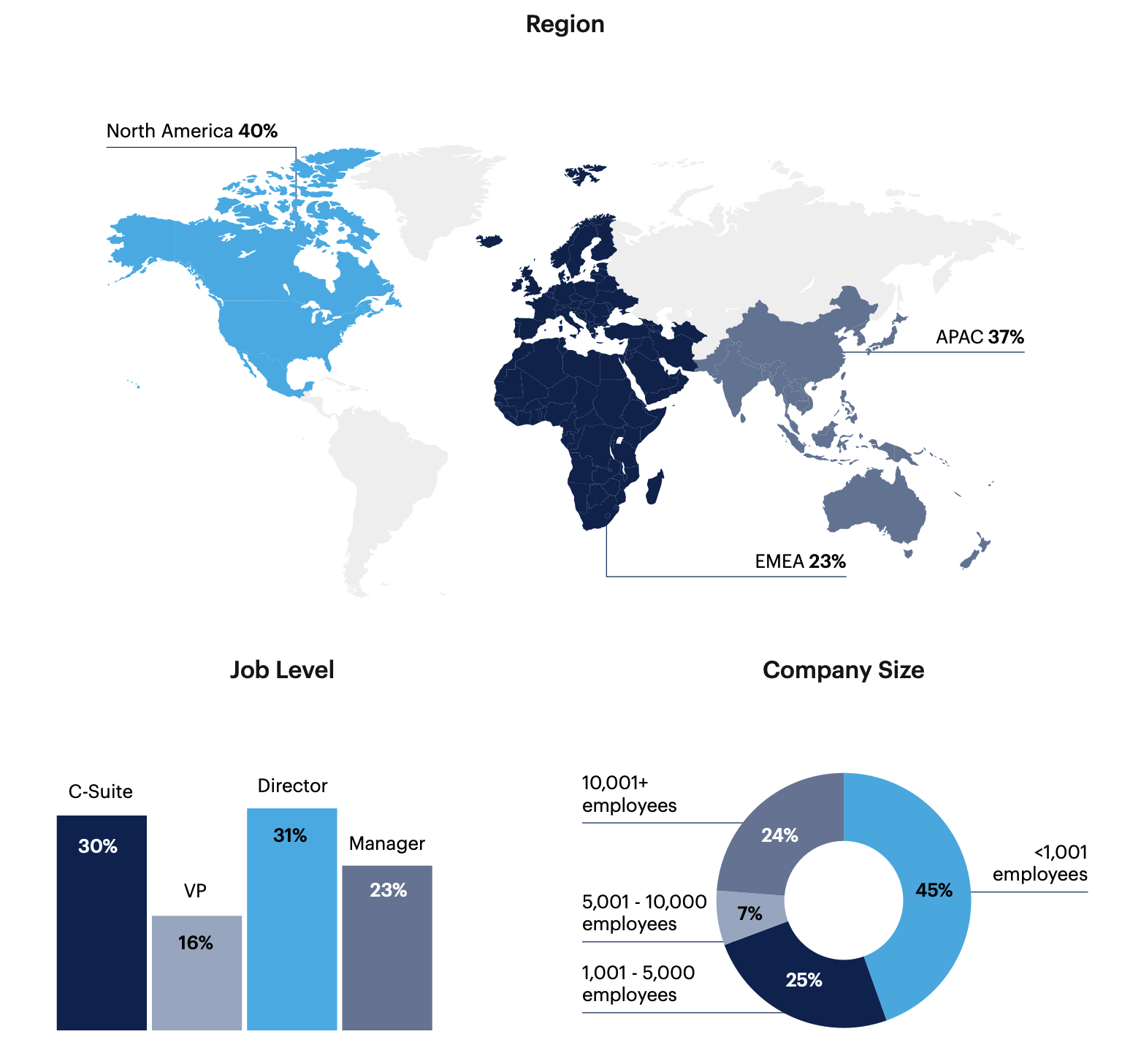
Note: May not add up to 100% due to rounding
Respondents: 102 software engineering leaders currently using design-led engineering in their organizations